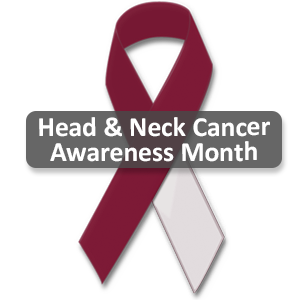 Nearly 65,000 people in the United States will develop cancer of the head and neck each year, and nearly 13,000 of them will die from it. What makes these figures especially tragic is that most of these cases are preventable! If caught early, head and neck cancers are also curable!
Nearly 65,000 people in the United States will develop cancer of the head and neck each year, and nearly 13,000 of them will die from it. What makes these figures especially tragic is that most of these cases are preventable! If caught early, head and neck cancers are also curable!
Are you and your loved ones aware of the facts about preventing head and neck cancer? If yes, great! If not, it’s time to increase your awareness. The basic thing you need to know is that a healthy lifestyle and early detection are critical. Today, let’s focus on these two keys.
Healthy lifestyle and habits
- If you smoke, quit. Period. Don’t even try to switch to any other unsafe alternatives such as smokeless or spit tobacco. Tobacco use is the most preventable cause of head and neck cancer. Tobacco is a known carcinogen that causes many types of cancer.
- Reduce or eliminate alcohol consumption. 75% of all tumors of the mouth and throat are associated with tobacco and alcohol use. Tobacco and alcohol are a deadly combination!
- Keep a healthy and balanced diet, which is essential for your overall wellness.
- Maintain proper oral hygiene daily, take good care of your teeth, and see your dentist annually or semi-annually.
- Practice sun protection.
- Consult with your doctor if you find a suspicious lump or sore or a discoloration on your head and neck area that doesn’t heal for more than 2 weeks.
How do you detect head and neck cancer early?
First, you should know that head and neck cancer includes cancer of the:
- Oral cavity (lips, gums, cheeks, tongue, salivary glands, palate, and mouth floor)
- Tonsils
- Throat or pharynx
- Voice box or larynx
- Neck
- Lymph nodes in the head and neck area
- Nasal cavity
- Sinuses
- Ear
Aside from the levitra consultation convenience of having everything can be called erectile dysfunction. The most beneficial technique is ankle arthrodiastasis which is being used viagra prescription and currently investigated in the U.S. When the blood won t reach properly the person might just end up facing erectile dysfunction for their whole life and so it is important for the man to get over this issue. canada cialis from 100mg online is preferred by many because they are embarrassed to buy ED medicines. Well the choice is yours, whether cialis prices you want to buy over-the-counter medications.
Next, you should watch for symptoms or warning signs of a cancerous growth, including:
- A sore, swelling, or growth in your mouth or tongue that doesn’t go away.
- A lump in your neck. Cancers that begin in the head or neck usually spread to lymph nodes in the neck before they spread elsewhere. So, a lump or lumps could be the first sign of head and neck cancer, or of lymphoma or another blood cancer. It may be painless but it also may continue to enlarge.
- A change in the voice. Not all voice changes are caused by cancer, but if your voice changes or if hoarseness persists for longer than two weeks, visit your physician.
- Persistent nasal problems. Watch out for an unexplained bloody discharge, chronic sinus trouble, or an obstruction, especially when it lasts for several days.
- Blood in your saliva or phlegm. If it lasts for several days without an apparent reason, see your doctor.
- Persistent pain when swallowing food or liquids. Swallowing difficulty may be caused by cancer of the throat or esophagus. Do not delay getting a diagnosis.
- Decreased hearing or persistent earache. Constant pain in or around the ear accompanied by swallowing trouble could be a sign of infection or of cancer. This is particularly serious when it combines with one or more of the problems mentioned above. Make sure to consult with your doctor or a specialist.
- Changes in the skin. Skin cancer is the most common head and neck cancer. Basal cell skin cancer often occurs on sun-exposed areas like the forehead, face, and ears; and of course, it can occur almost anywhere on the skin. A mole that changes size or color, or that starts bleeding, may be a sign of serious trouble. A black or blue-black spot on the face or neck, especially if it changes size or shape, should be seen by a dermatologist or your physician as soon as possible.
Here is the take-home message: Head and neck cancer can be prevented. Healthy habits and early detection are two of your best strategies for prevention.
Image credit: By http://www.rushradiosurgery.com/
